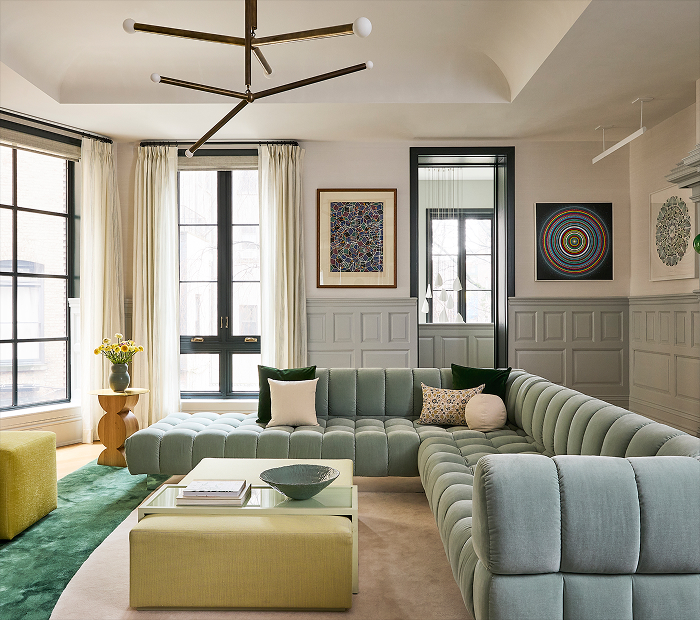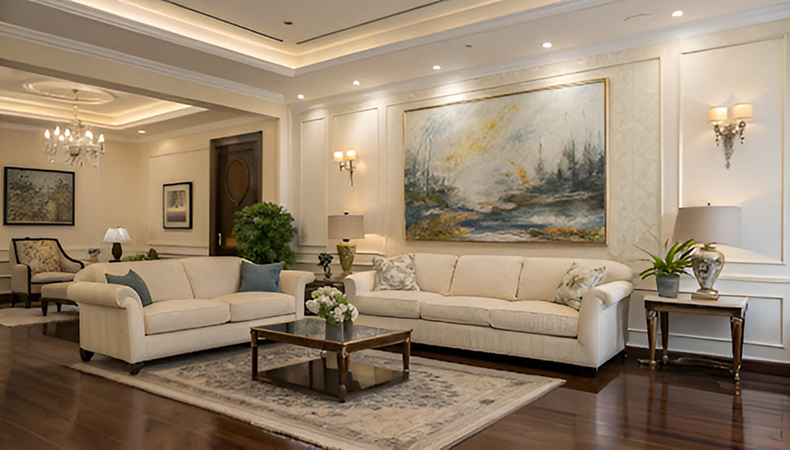In a world that moves fast, a minimalist living room offers something rare: calm, clarity, and quiet confidence. Minimalism isn’t about having less for its own sake — it’s about keeping only what serves comfort, function, and beauty. Done well, this approach yields a space that feels airy and intentional, yet warm and welcoming.
Whether you’re refreshing an existing room or starting from a blank canvas, this guide walks you through a practical, design-forward process to achieve a living room that’s simple, sophisticated, and wonderfully livable.
Why Choose Minimalism?
- Promotes tranquility: Fewer distractions mean a calmer mind and a more restorative space.
- Easier to maintain: Less clutter and smarter storage reduce cleaning time.
- Visually larger: Negative space and clean lines create an open, airy feel.
- Timeless style: A restrained palette and quality materials age gracefully.
Core Principles of a Minimalist–Elegant Living Room

- Neutral foundation: Whites, beiges, taupes, soft greys, and muted pastels.
- Purposeful furniture: Streamlined silhouettes and multi-functional pieces.
- Negative space: Let surfaces breathe; avoid overfilling the room.
- Natural materials: Wood, stone, wool, linen, and greenery for warmth.
- Edited decor: Fewer accents, but with clear intention and impact.
Related Post: Romantic Room Decoration for the Wedding First Night
Step-by-Step: Designing Your Minimalist Yet Elegant Living Room
1) Set a Calm Color Framework
- Choose a light, neutral base for walls (e.g., warm white or soft greige).
- Keep large furniture within the same tonal family to feel cohesive.
- Add depth with texture (matte walls + boucle or velvet seating; stone + linen).
Pro tip: Use one accent hue sparingly (e.g., charcoal, sage, or sand) to ground the palette without visual noise.
2) Curate Functional, Streamlined Furniture
Opt for low-profile sofas with clean lines; avoid bulky arms and heavy skirting.
Pick a coffee table with a slim frame (metal, stone, or wood) and a simple form.
Prioritize multi-use pieces: ottomans with storage, nesting side tables, benches.
Edit rule: Aim for 3–4 statement pieces and resist adding “placeholders.” Let emptiness be part of the composition.
3) Layer Texture, Not Stuff
- Mix tactile elements: nubby wool rugs, linen curtains, smooth stone, rattan.
- Repeat textures 2–3 times across the room for harmony (e.g., linen cushions + linen drapery).
- Use tone-on-tone patterns (micro-herringbone, subtle ribbing) for quiet dimension.
4) Anchor with One Statement Artwork
A minimalist room thrives when a single focal point leads the eye. Choose one large art piece to establish mood and scale. If you’re curating a serene, gallery-like look, browse refined, ready-to-hang pieces at https://tryartwork.com — select oversized abstracts in neutral palettes, soft landscapes, or minimal line art that complement your color story without overwhelming it. One confident artwork > many small distractions.
5) Maximize Natural Light & Smart Illumination
- Use sheer or unlined curtains; mount them high and wide to elongate windows.
- Add mirrors opposite light sources to bounce daylight deeper into the room.
- Employ layered lighting: a sculptural pendant, slim floor lamp, and warm table lamps.
Lighting cue: Choose warm (2700–3000K) LEDs for a relaxed, elegant glow.
6) Design Invisible Storage
- Floating consoles, built-ins with flat fronts, and baskets with lids keep clutter hidden.
- Allocate specific “homes” for remotes, chargers, throws, and magazines.
- Adopt a one-in/one-out habit to maintain visual clarity.
7) Edit Accessories with Intention
- Style surfaces in odd numbers (1 or 3 objects): a vessel, a book stack, a sculptural accent.
- Favor scale over quantity — one tall branch arrangement beats multiple small knickknacks.
- Choose natural greenery (olive, rubber plant, monstera) to add life without clutter.
Trends that Complement Minimalism
- Japandi: A blend of Japanese restraint and Scandinavian warmth: pale woods, low furniture, and soft textiles.
- Organic Modern: Curved silhouettes, limewash walls, travertine, and muted earth tones for quiet luxury.
- Statement Lighting: Linear chandeliers or sculptural pendants act as art while keeping the room spare.
Common Pitfalls (and Fixes)

- Over-decorating: If every surface is styled, nothing stands out. Remove 30% and reassess.
- Too many colors: Cap the palette at 3–4 tones including accents.
- No storage plan: Visual serenity depends on hidden storage — plan it early.
- Style over comfort: Test sofa depth, cushion density, and fabric feel before buying.
Pro Tips for a Refined Finish
- Prioritize negative space: Leave blank wall segments and open floor area for visual “breathing.”
- Invest in fewer, better: Quality upholstery, a great rug, and one significant artwork elevate everything.
- Mind sightlines: Keep tall items away from window axes to preserve light and flow.
- Unify metals: Limit to one finish (e.g., brushed nickel or aged brass) for coherence.
FAQs
1) How do I keep a minimalist living room from feeling cold?
Layer textures (boucle, linen, wool), add warm wood tones, choose warm lighting, and incorporate greenery.
2) Can I use patterns?
Yes — opt for subtle, tone-on-tone patterns on a single large surface (rug or throw) rather than many small items.
3) What flooring works best?
Hardwood, wide-plank engineered wood, polished concrete, or large-format neutral tiles. Add a simple area rug to soften acoustics.
4) How much art is too much?
In minimalism, one large statement piece (or a tightly edited diptych) is usually stronger than a busy gallery wall.







